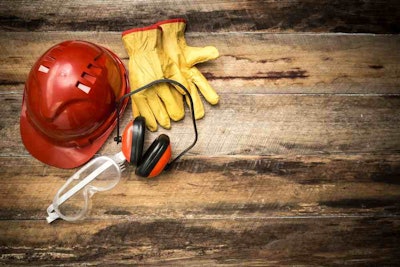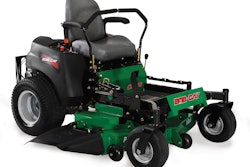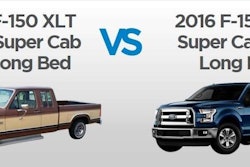
Occupational Safety and Health Administration (OSHA) regulations require employers to assess the workplace, provide workers with appropriate protective equipment and then require them to use it.
Of course, the type of PPE needed depends on what type of job an employee is doing. For example, when operating a chainsaw, cutting concrete or applying liquid chemicals, employees must wear eye protection.
These are obviously not the only situations in which you’ll want to require your workers to wear goggles or safety glasses. A good rule of thumb is to always use them in situations where flying debris is common. It is especially vital that the eyewear is resistant to the particular hazard involved in the work. Goggles that are resistant to chemical splashes aren’t necessarily going to help someone working around flying woodchips.
Ear protection is also critical in numerous landscaping jobs. Exposure to high levels of noise can result in hearing loss. Working around machinery that makes noise of 85 decibels (dB) or higher for eight hours a day can take a toll. Hearing loss is a gradual thing, but no one is immune.
It is a good idea to use hearing protection when equipment exceeds 80 dB. There are several options to choose from when selecting hearing protection. Formable earplugs are one size fit all and disposable. Pre-molded earplugs must be sized, but can be reused. These are a good option when exposed to loud noises on a regular basis.
Earmuffs are another good option for regular usage and tend to be more comfortable over longer periods of time than plugs. Both earmuffs and pre-molded plugs should be washed regularly.
Head protection should be worn when working underneath areas where colleagues and equipment are at work, or when in or under trees that are being worked on. Hard hats should be made of slow burning, water-resistant molded plastic. A hard hat that has been struck should be replaced, whether damage is visible or not.
Do not paint plastic hard hats as the paint can make the headwear brittle and vulnerable to cracks as well as obscuring other cracks that form. Also, be sure not to place anything between the suspension and shell. The clearance is needed to absorb the shock of an object’s impact.
Selecting the right gloves for the right job is probably the trickiest of the PPE. Many are designed for a particular form of protection but are inappropriate for other uses. For example, while fabric gloves can guard against abrasions and dirt, they are not sufficient when working with sharp materials.
If working with harsh chemicals, it’s a good idea to wear gloves in order to prevent burns and skin irritation. Latex gloves are able to withstand acids, alkalis, salts and ketones while still providing the needed dexterity. Other chemical-resistant gloves are butyl gloves, neoprene gloves and nitrile gloves.
When applying pesticides, respirators should be worn to avoid inhalation or ingestion of these chemicals. Other situations calling for a respirator include those in which an employee will be exposed to harmful dusts, gases or vapors.
The last crucial piece of PPE is the proper footwear. Good tread is needed in any workplace to prevent slips. Steel-toed boots will defend against falling limbs or other dropped items. Good work boots should also be insulated for extreme temperatures.
Finally, remind your crews that while each piece of personal protection equipment serves as a last line of defense against injury, it can’t substitute for good work practices.










